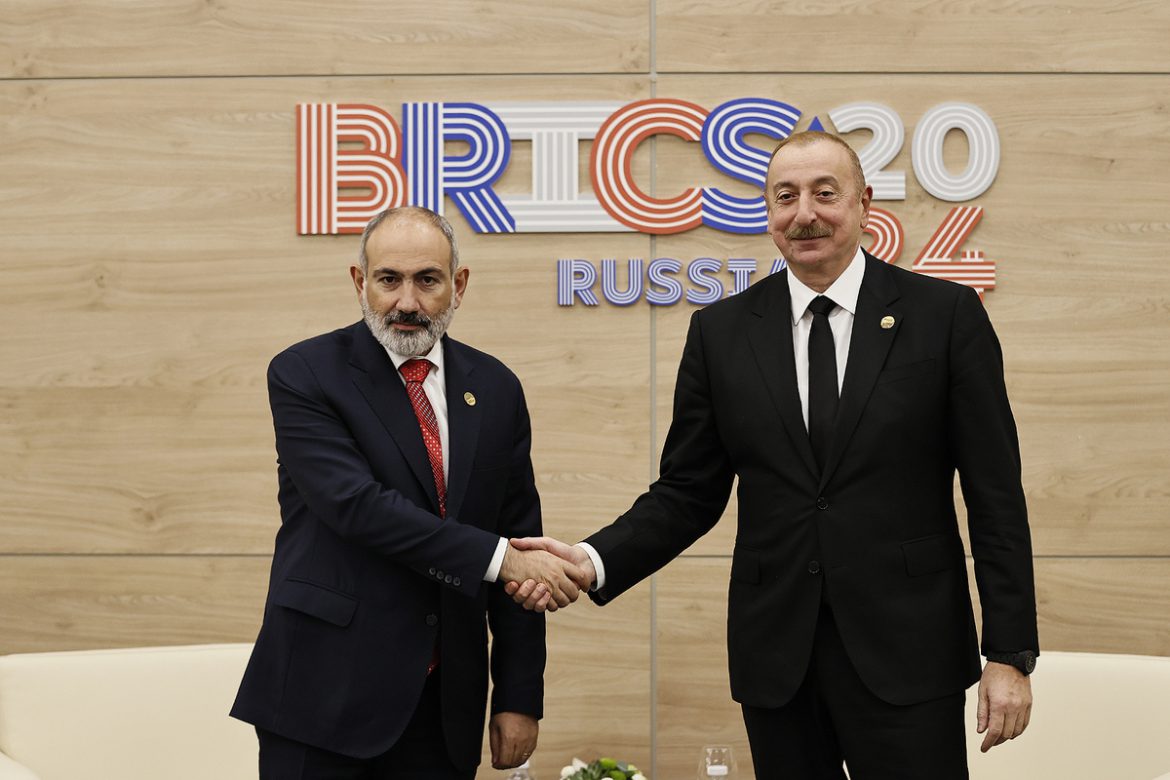By Harut Sassounian
There seems to be no end to Prime Minister Nikol Pashinyan’s concessions to Azerbaijan’s demands. The only end will be the end of Armenia.
Last week, when Pres. Ilham Aliyev once again issued threats against Armenia, Pashinyan responded with further concessions. It feels like Aliyev is ruling Armenia from Baku.
Aliyev gave a lengthy press conference to the Azeri media on January 7, 2025, during which he made arrogant statements about Armenia using an extremely demeaning tone. Here are excerpts from his remarks:
— Armenia returned the four villages in the Tavoush region to Azerbaijan “as a result of a monologue rather than a dialogue.” Armenia returned these villages “under coercion.”
— “Armenia cannot compete with us in the arms race.”
— “The independent Armenian state is, in fact, a fascist state…. Therefore, fascism must be eradicated. Either the Armenian leadership will destroy it, or we will.”
— “Armenia must immediately cease arming itself. France and other countries that supply weapons to Armenia must terminate and cancel these contracts. The weapons that have already been delivered to Armenia must be returned.”
— “The dissolution of the Minsk Group and the amendment of the constitution; without these, a peace treaty is impossible.”
— “The Zangezur corridor must and will be opened.”
–“During his [Pres. Trump’s] first term, there was no issue in U.S.-Azerbaijan relations. On the contrary, the relations were very positive, and we were able to make progress in many areas. The main mistake of the Biden administration regarding Azerbaijan was that they sacrificed U.S.-Azerbaijan relations for U.S.-Armenia relations.”
— “Considering that the current territory of Armenia essentially includes the historical lands that were predominantly inhabited by Azerbaijanis, today we assert that 300,000 Western Azerbaijanis should return to those regions. However, the total number of those who have been displaced from that region, and who are now living in various parts of Azerbaijan, along with their descendants, is several times greater than 300,000.”
After members of the Armenian media complained about Pashinyan’s eerie silence about Aliyev’s threatening comments, he finally agreed to answer a few questions from Armenpress on January 8:
Pashinyan said that by making aggressive statements about Armenia, Aliyev expected a similar aggressive response from Armenia “to form the basis for a new escalation in the region. We will not take that path and we will remain committed to the strategy of peace.” Pashinyan keeps begging for peace and ignoring Aliyev’s multiple rejections. Aliyev prefers a piece of Armenia rather than a piece of paper which he will ignore even if he signs it. In this short interview, Pashinyan repeated the word peace 11 times.
When asked for his reply to Aliyev’s accusation that Armenia is “a fascist state,” Pashinyan sheepishly agreed that there is such a perception about Armenia in Azerbaijan, just as there is a similar perception about Azerbaijan in Armenia.
Regarding Aliyev’s persistent demands for an Azeri corridor through Armenia, Pashinyan once again failed to demand that, as stated in the 2020 agreement, Azerbaijan allow a reciprocal access for Armenia through Azerbaijan.
In responding to a question about Aliyev referring to the Republic of Armenia as “Western Azerbaijan,” Pashinyan simply said: Aliyev “has said nothing new about this topic for me to have a new reaction.”
Regarding Aliyev’s complaints about Armenia acquiring arms, Pashinyan stated: “no one can dispute the right of the Republic of Armenia to have a defensible army.” He then added: “we do not have an objective of militarily returning more than 200 square kilometers of occupied territories of the Republic of Armenia….”
In response to Azeri accusations of Armenia violating the ceasefire, Pashinyan repeated his proposal “to create a joint mechanism to jointly investigate each report about ceasefire violations, and draw joint conclusions.”
On January 9, Pashinyan posted on his Facebook page a lengthy statement comprised of 17 points, complying with Aliyev’s demands for concessions.
He described “Western Azerbaijan” as consisting of several towns located in the Western part of Azerbaijan, including parts of Artsakh. He falsely named cities in the Republic of Armenia as being “Western Armenia,” adding facetiously, “there is no Western Armenia beyond this and cannot be.”
He then detailed the components of “establishing lasting stability and peace in the region”:
— “Mutually abandon escalatory narratives.”
— “Continue the delimitation process.”
— “Sign a peace treaty which is 90% ready.”
— “Implement the ‘Crossroads of Peace’ project.”
— “Introduce a joint mechanism for investigating ceasefire violations.”
— “Fully resolve the issue of detained persons.”
— “Work in full intensity to locate and resolve the issue of determining the fate of those considered missing.”
— “Withdraw the claims against each other, including, but not limited to, claims in international courts.”
— “Work on the complete and effective implementation of the provisions of the peace treaty.”
— “Form a mechanism for negotiating around mutual arms control, quota allocation, and implementing restrictions on the use of armaments.”
— “Discuss in full the issues pertaining to refugees from the two countries by forming a joint professional, expert commission after the establishment of peace.”
— “Dissolve the OSCE Minsk Group.”
Some of these points are a rehash of Pashinyan’s previous proposals which Aliyev has not accepted. However, several are against Armenia’s interests, particularly: the withdrawal of mutual lawsuits in international courts and dissolving the OSCE Minsk Group. Both of these demands were dictated by Aliyev.




